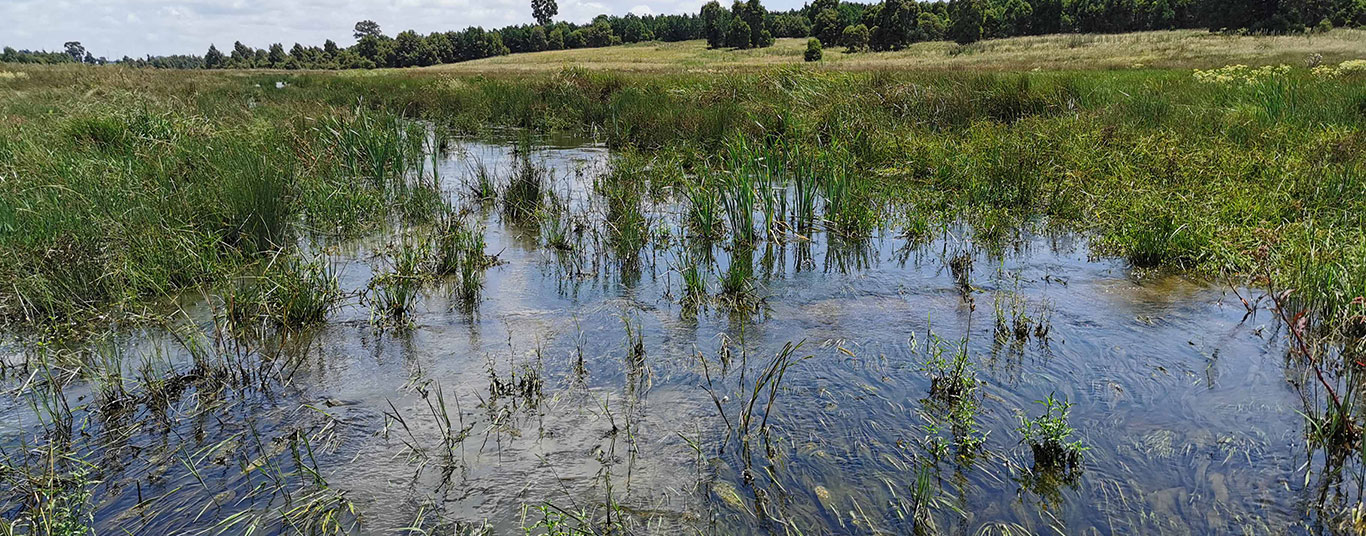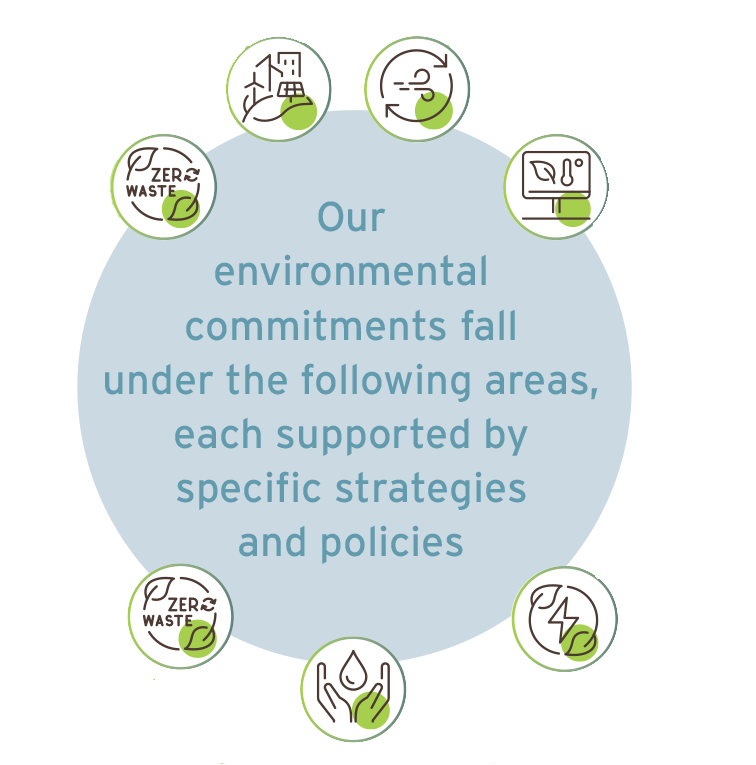Environment
We manage our impact by incorporating environmental performance principles in our ESG management
systems, environmental policies and practices. We comply with local
legislation, management standards, and current and future-based best practice. Our approach goes
beyond compliance as demonstrated by our participation in voluntary
benchmarks such as the global CDP climate and water disclosure projects.
Our environmentally and socially responsible response to
climate change reflects our commitment to sustainability and objective to become carbon neutral
by 2050, and supports South Africa's just transition programmes.
Stewardship timeline
We aim to be a leading mining company through our response to climate change and environmental
stewardship.

Signatory to the UNGC

Partnered with Eskom and other companies
to develop the first grid emission factors for
South Africa

Established decarbonisation portfolio
management office
Best sustainability reporting award winner
Climate change reporting finalist

Committed to support and disclose through
the CDP

Headline sponsor of South African Pavilion
at annual UN Framework Convention on
Climate Change COP meetings

Established an ESG steering committee
and portfolio management office, which
integrates decarbonisation and other
critical ESG factors

A- for CDP disclosure

Top five ESG rating

Be carbon neutral

Cennergi JV with Tata Power

Published climate change position
statement and support for TCFD
recommendations
Our approach
Our environmental management programmes comply with applicable legislation, ensuring that all
activities requiring licences are fully licensed, and our Sustainable Growth and Impact strategy
guides the evolution of our environmental policy as we transition to a climate change-resilient
portfolio.
Management standards for air quality, water, energy, mine closure and rehabilitation as well as
environmental incident management and reporting support our BUs in this transition, and embed
climate change mitigation and adaptation. These standards are integrated into our environmental
management activities, which are also ISO 14001-certified. Our STI scheme, aligned with our
decarbonisation plan and Sustainable Growth and Impact strategy, motivates employees to uphold
these standards.
We evaluate our environmental impacts in terms of NEMA's precautionary principle.
Exceeding minimum regulatory requirements
To ensure that we respect human rights and maintain our environmental licence to operate, we
strive to exceed minimum regulatory requirements and ensure consistent compliance. Our  wheel of
excellence defines this approach. This ensures our approach to environmental stewardship
is consistent across the group. It effectively integrates new assets to align our BUs in
implementation, compliance, monitoring and reporting processes. It also guides BUs in acquiring
necessary competencies.
wheel of
excellence defines this approach. This ensures our approach to environmental stewardship
is consistent across the group. It effectively integrates new assets to align our BUs in
implementation, compliance, monitoring and reporting processes. It also guides BUs in acquiring
necessary competencies.
Regulatory challenges
Belfast's water use licence (WUL) was submitted to the DWS for review and was granted in the
fourth quarter of 2022. The renewal application for Matla's WUL was declined by DWS. However, an
appeal was lodged with the Water Tribunal ensuring that the WUL is valid until a decision has
been made. In the interim, Exxaro is engaging with DWS to find an acceptable resolution.
Cennergi creates clean renewable energy solutions for state-owned entities,
industrial and mining customers, and communities.
Cennergi's
environmental and social management system manages impacts in line with
local standards and principles, the Equator Principles, the International
Finance Corporation's (IFC) per formance standards and the World Bank's
guidelines, among other international requirements.
Accountability and responsibility
The RBR committee oversees our environmental management and impact on behalf of the board. The
executive head: sustainability is
responsible for implementing environmental strategies for the group, assisted by sustainability
and BU managers.
How we performed
We intensified our focus on environmental areas that impact our journey to environmental
stewardship and goal to be carbon neutral by
2050. We also intensified efforts to decarbonise our operations through implementing energy
efficiency projects, implementing energy
and water performance metrics across all functional areas and ensuring we close the loop on
resource use. Through our university chairs,
we promoted research and activities that advance sustainable utilisation of resources, the
mitigation and adaptation of climate change
effects, and other pertinent environmental issues.
To further improve our performance and sustainability, we are looking into strategic
partnerships, applying green technologies and sound environmental management tools.
Environmental incident reporting
Our standardised environmental incident reporting system ensures our BUs manage incidents
effectively and efficiently to minimise negative impact. We immediately report incidents and
mitigation measures to relevant authorities.
Following the update of our environmental incident management standard in 2021 to include level 0
incidents (incidents with no impact to the receiving environment but those that pose a potential
risk), we continue to monitor these incidents. In 2022, we recorded nine level 1 incidents
(2021: 31).
We have not recorded level 2 (intermediate impact and/or non-compliance) and 3 (major impact
and/or non-compliance) incidents over the past three financial years.
 |
Refer to the databook for details of our level 1 environmental incidents. |
Cennergi did not record significant environmental incidents.
Future focus
- Continue developing our decarbonisation plan and intensifying mitigation
measures in our operations to ensure we achieve our 2026 target of reducing
scope 1 and 2 emissions by 43%
- Prioritising employees and communities in our decarbonisation journey
- Keeping abreast with developments in the climate technology and analytics areas
for mitigation and adaptation purposes
- Improving our ESG performance in environmental management through carbon
emissions reduction, biodiversity, waste, water and resource management
|
We sent a delegation to the United Nations Framework
Convention on Climate Change (UNFCCC) COP27 in
November 2022.
Our delegation attended the event in Sharm El-Sheikh,
Egypt,
with the following objectives on their agenda:
- Showcase actions and opportunities by informing peers and other
stakeholders about our approach to climate change, the
low-carbon transition, its social impact and the just transition
- Support the South African governmen's commitment to addressing
climate change
- Share developments and opportunities in decarbonisation
(including social impact implications)
- Acquire additional ESG insight critical for Exxaro's
sustainability
- Fortify our position as an environmental steward and climate
change mitigation and adaptation champion
- Discuss sustainable investment and its implications for our
future social impact projects
- Keep abreast of global developments in minerals, renewable
energy, coal mining and social impact
- Seek partnerships and collaboration for business resilience, the
just transition and scaling social impact
|
Our presentation focused on ensuring business
resilience
in a low-carbon world, changing business perceptions
about biodiversity, climate risk, ESG performance and
ESG sentiment in mining.
We returned from the event with the following goals:
- Prioritise data management, quality control, storage and
embedment, especially for scope 3 emissions, with potential
collaboration with experts working on digital transfer of data
from suppliers, customers and other value chain partners
- Invest in renewable energy and investigate other clean
technologies, such as carbon capture and storage
- Mitigate emissions from our future mineral operations through
self-generation of renewable energy, energy efficiency measures
and mine vehicle fleet electrification
in the medium to long term
- Follow developments of the Climate Technology Centre and
Network–particularly the programme accelerating
transformative climate technology deployment
- Consider adaptation, sustainable livelihoods and human rights in
the development and growth of our minerals and energy businesses
- Access the UNFCCC's loss and damage funding for vulnerable
countries hit hard by climate disasters to advance our
sustainable livelihoods programmes and social impact scaling, as
contemplated in our Sustainable Growth and Impact strategy, in
collaboration with government
|
Wheel of excellence
Our environmental commitments fall under the following areas, each supported by specific
strategies and policies:
|
 Environmental
liabilities and rehabilitation Environmental
liabilities and rehabilitation
|
|
Our mine plans consider land management, closure and
concurrent rehabilitation with financial provision to ensure
we honour our commitments.
|
- Approved environmental management programme with closure
objectives
- Mine closure and concurrent rehabilitation procedures
- Integrated concurrent and closure plan
- Environmental risk amendments
- Rehabilitation monitoring and KPI reporting
- Closure project management
|
|
 Air quality Air quality
|
|
We manage and mitigate the negative impacts of air
pollution, including dust and particulate matter, emanating
from our mining activities.
|
- Approved air quality authorisation (atmospheric emission
licence)
- Management procedure and plans
- Assessment, monitoring and reporting
- Emissions inventories
|
|
 Biodiversity Biodiversity
|
|
|
Our low-impact, high-value approach supports ecosystem
health to protect indigenous flora and fauna at our
operations.
|
|
- Approved environmental impact assessment authorisations
- Management procedure
- Impact assessments
- Management plans
- Ecological offset impact procedure (includes terrestrial and
aquatic/wetland ecosystems)
|
- Monitoring and reporting
- Ecology efficiency reports
- Land management strategy
- Land management procedure
- Operational land management plan
- Land disposal strategy
|
|
|
 Climate change
resilience Climate change
resilience
|
|
We are building our climate resilience by enhancing
the
adaptive capacity of Exxaro and communities and
capitalising on strategic opportunities
presented
by the transition to a lower-carbon economy.
|
- Carbon measurements, data and reporting
- Carbon emissions reduction projects
- Becoming carbon neutral by 2050
- Climate change adaptation and mitigation
- Green supply chain
- Climate considerations for capital projects
|
|
 Waste management Waste management
|
|
Our cradle-to-cradle approach minimises waste production
through recycling and reuse within a circular
economy.
|
- Approved waste management licence
- Waste stream assessment
- Prevention, reuse, recycling and energy recovery
- Management procedure (including classification)
- Handling, transportation and disposal procedure
- Monitoring and reporting
|
|
 Water security management Water security management
|
|
Our water security plan is based on efficient water
consumption, reuse and recycling to protect natural
resources.
|
- WUL
- Management standards and procedures
- Risk assessment
- Water-saving targets and performance reporting
- Monitoring and reporting
- Technological water treatment options
- Integrated water management plans
- Audits
|
|
 Energy management Energy management
|
|
Our energy and carbon management programme drives
efficiencies that support a just transition to a
low-carbon economy.
|
- Measurement, data and reporting
- Energy intensity improvement projects
- Becoming carbon neutral by 2050
- Climate change adaptation and mitigation
- Green supply chain
- Energy and carbon management guidelines for capital
projects
|

Wetland project











![]() wheel of
excellence defines this approach. This ensures our approach to environmental stewardship
is consistent across the group. It effectively integrates new assets to align our BUs in
implementation, compliance, monitoring and reporting processes. It also guides BUs in acquiring
necessary competencies.
wheel of
excellence defines this approach. This ensures our approach to environmental stewardship
is consistent across the group. It effectively integrates new assets to align our BUs in
implementation, compliance, monitoring and reporting processes. It also guides BUs in acquiring
necessary competencies.



 Report Index
Report Index